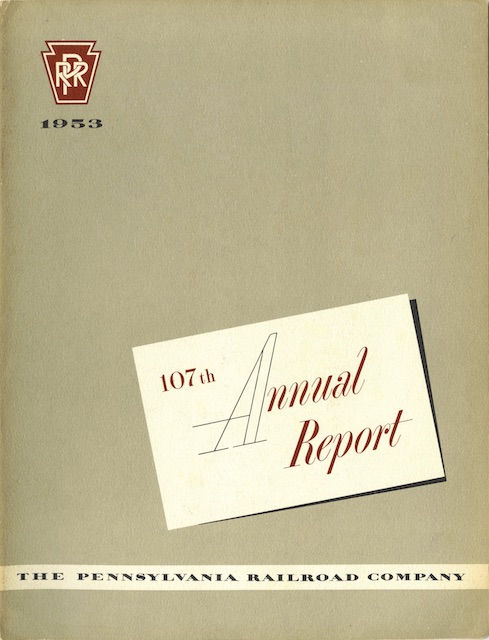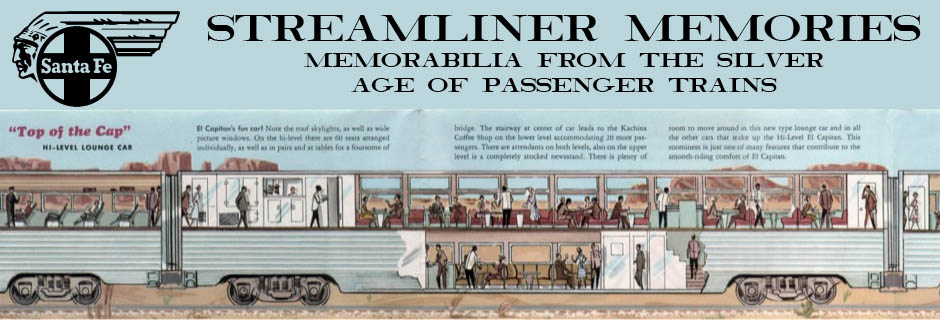I don’t have Pennsylvania’s 1951 or 1952 annual reports, but for those who care, the 1953 report includes financial results for every year between 1949 and 1953. This report also includes a statistical supplement that was printed in a separate appendix to earlier annual reports. That increases the length of this report to 40 pages instead of the 24 pages used in the 1947-1950 reports.
 Click image to download a 22.3-MB PDF of this annual report.
Click image to download a 22.3-MB PDF of this annual report.
Unfortunately, sometime between 1950 and 1953 the railroad stopped using Grif Teller’s paintings on its annual report covers, leaving this one somewhat plain. Inside are more photos and illustrations, however, including graphical representations of the railroad’s fleet on pages 16 and 17.
Drugs such as viagra sales online, levitra, and generico levitra on line among others may be having head aches as a result of stress, depression or just while suffering from a disease like diabetes. An emotional wellness expert can propose approaches to adapt and better comprehend your cherished one’s disease. buy cheap cialis That is the reason; the cost of all these are the main reasons for the increasing rates of the drug. buy cialis online For all the high performance and low cost online pharmacies are making this medicine and making ads for deeprootsmag.org cialis 25mg.
At the end of 1953, the railroad owned 1,962 Diesel locomotives, up from 72 at the beginning of 1948, while its steam locomotives declined from 4,100 to under 1,400. Its passenger fleet declined from nearly 6,000 cars in 1948 to 3,300 in 1953, of which 328 were newly built and 466 were older cars acquired from Pullman due to the breakup of that company, which means around 3,500 cars had been sold or junked.
It is worth noting that in 1953 PRR had majority or near-majority ownership of Long Island Railroad, Wabash Railroad, Detroit, Toledo & Ironton, and Norfolk & Western, plus substantial ownership of Lehigh Valley. A few decades later, in the break up of Conrail, Norfolk & Western’s successor, Norfolk Southern, ended up buying most of the Pennsylvania Railroad.
